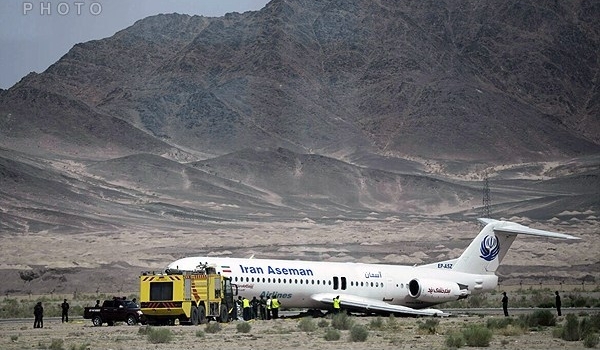May 16-2014

An Aseman Airlines passenger jet made a belly flop landing Saturday at Zahedan airport, but there were no deaths and few injuries.
The incident underlined that Iran has not suffered any major crashes for more than three years after a decade in which the public complained that planes seemed to be falling out of the sky almost every day.
It was never that bad, of course. But from the beginning of the 21st Century through January 2011 there were 15 major plane crashes over those 132 months. That was one crash every nine months. A total of 1,037 deaths were reported.
But in the 40 months since January 2011, Iran has not suffered any major crashes.
Many if not most of the 15 crashes from 2000 through 2011 were suspected of resulting from poor quality maintenance, although the government was never transparent about what happened with most of the planes.
The most stunning crash involved a Caspian Airlines TU-154M passenger plane flying to Armenia that caught fire in the air and went into a nose dive July 15, 2009, crashing near Qazvin at great speed, leaving little but a crater in the ground. The government has never issued an explanation for that loss. All 168 on board were killed.
Some crashes were blamed on pilot error. For example, on July 24, 2009, an Aria Airlines Ilyushin-62M landed halfway down the runway at high speed and careered one kilometer beyond the end of the runway before stopping. Sixteen people in the front of the plane were killed.
The plane that made the belly flop landing Saturday was a Dutch-made Fokker-100 carrying 113 people. Only nine were reported injured in the hard landing.
The plane was flying from Mashhad to Zahedan. As the pilot prepared to land at Zahedan, the left rear undercarriage refused to go down. The pilot circled for an hour, both trying to get the undercarriage to work and using up excess fuel to minimize the chance of a fire if he had to make a belly flop landing.
In the end, the pilot was forced to make the belly flop landing. After it was over, the pilot told reporters the hardest part was telling the passengers the landing gear would not come down.
